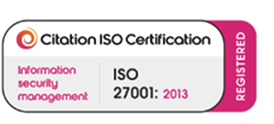Google Named Updates
Over the last 17 years Google’s algorithm has grown, expanded, become much more complicated. Small tweaks are made daily with most going un-noticed but there are a few that a big enough to have names, cute names that strike fear in to the heart of SEOs and business owners alike!
Let’s have a look at a few of the Google named updates…
Hummingbird
The Hummingbird name was first used in August 2013 but it has since been made clear that it is not just a standard update but is the name for Google’s whole core algorithm.
Panda
First introduced in February 2011, this update focuses on how websites are assessed as being good quality or not. There are a lot of factors that Panda looks at, too many to list here, but the overall aim of this update was to increase the quality of the pages that Google served in its results pages.
When Panda first started rolling out a lot of sites saw themselves drop in rankings and traffic, and some are still living with the consequences of this.
Penguin
Penguin is for off-page quality assessment as Panda is for on-page. First rolled out in April 2012 Penguin is designed to look at the backlink profile of sites and search for certain “red-flags” such as links from blog networks, exact match anchor text, and those buying links.
Once a site is caught by Penguin it can be hard to get out from under. Thankfully Google later introduced the disavow tool to help sites owners that wanted to clean their backlink profile up.
Pigeon
Pigeon rolled out in July 2014, at first it only impacted the US but by the end of the year it had also started to roost in the UK, Canada, and Australia. This update focuses on local results and tries to give users who are searching for a local service more results in their local area.
This had a major impact on certain search results, especially for companies that relied on local searches.
PageRank
PageRank holds a special place in many SEOs hearts; it was the first named update and many people still believe it to be the name of the whole Google algorithm. It is still used to get a basic score of pages using the links that point to a particular page from other websites. Oh how simple things were back in 1998!
RankBrain
RankBrain is the latest addition to the “Named Google Updates” club. This update takes advantage of machine learning to understand the natural language and the search intent of the user. It has less to do with how a site is optimised and more about Google trying to understand what someone really means when they use a search phrase or when they are refining a search and a follow up search query.
Top Heavy
This update is designed to wheedle out sites that focus too much on adverts above the fold from high ranking positions. Too many ads at the top of the page distract from the main content and therefore seen as low quality.
Mobile Friendly
This update was designed to give priority to sites that are designed to be used on a mobile devise over pages that are not when someone is making a Google search on a mobile devise.
Unusually Google gave notice of this update and as a result was nicknamed “Mobilegeddon” in April 2015; however the impact was much smaller than expected.
Pirate
This update was designed to stop sites that had been reported for copyright infringement a number of times from appearing high up in the search results.
PayDay
This update was designed to stop spammers trying to artificially boost payday loan, gambling, and pornographic sites up the rankings. It’s not spoken about very much as, like Pirate, it is a highly targeted update.
“In the News” Box
Released October 2014 this update changed the way that news sources are displayed in Google’s search results to encourage more clicks through to news sites.
Wait…what about…?
Over the years there have been more named updates then are mentioned above. I’ve either not mentioned them because they have been replaced or repealed (such as Authorship) or I’ve forgotten some, in which case let me know and I’ll add them in!
Further Reading
These summaries only begin to scratch the surface. If you are looking for more detail on the timeline of releases then Moz’s Google Algorithm Change History page is a great tool and Search Engine Land goes in to a lot of detail about this subject and much more.
Want know what we can do?
If you have a site that you want think may have been impacted by any of these updates give us a call and let’s go through it together. Some of the issues caused by these updates are fairly simple to fix, others require more work but until you know which beast you’re battling you won’t know what to do!












